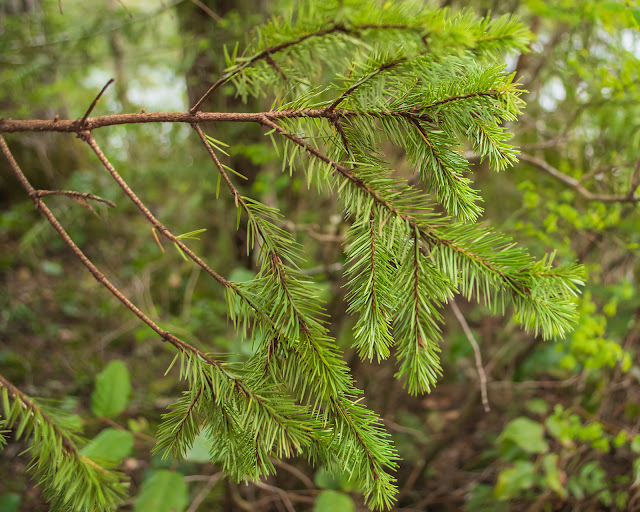Near the edge of a parking lot beside McIvor Lake, two young trees are growing burls.
 |
| Swollen trunk |
 |
| The second tree. Inset: the tip of a branch. |
A burl is a response to some injury, whether bacterial or insect damage, or a broken branch. Like scar tissue, but wooden. It's protective; it doesn't harm the tree.
Once damaged, the cambium cells continually to produce abnormal xylem, resulting in burls which enlarge throughout the life of the tree. (US Forest Service)
Although burls grow into weird shapes and sizes on trees that otherwise look normal, a burl itself is not diseased or contagious. (OrganicPlantCare)
 |
| Branch tip of the second tree. Douglas fir, I think. |
 |
| Glimpse of the lake. Hints of burl formation on one trunk. |
~~~~~~~~~~~~~~~~~~~~~~~~
Al lado de uno de los estacionamientos en el lago McIvor, dos árboles tienen nudos en el tronco.
Fotos #1 y #2: los nudos.
Estos son la respuesta del árbol a alguna trauma, sea de bacteria, o de insectos, congelamiento o una rama cortada o rota. Es como una cicatriz, pero hecho de madera. No le hace daño al árbol en absoluto sino que sirve de protección.
Una vez dañadas, las células del cadmio continüan produciendo xilema anormal, formando nudos que aumentan en tamaño durante la vida del árbol. (Del Servicio Forestal, EUA)
Aunque los nudos llegan a tener formas y tamaños extraños en árboles que, de otra manera parecen normales, el nudo en sí no es patológico ni contagioso. (OrganicPlantCare)
Foto # 3: una rama del segundo árbol. Creo que es un abeto de Douglas.
Foto #4: una vista al lago. Parece que se están formando nudos en uno de esos troncos.

We have a couple of burls. They are interesting. (ツ) from Cottage Country Ontario , ON, Canada!
ReplyDeleteI learned a new term. Before today the only Burl I'd heard of was the singer Burl Ives. The first burl looks like an owl to me and the second looks like some sort of tribal mask.
ReplyDelete